The Regulated-Rate Option Safety Net
Starting in 2001, customers gained access to retailer-provided electricity, thanks to the process of deregulation that began in 1996 with the passage of the Electric Utilities Act the previous year. In the past, businesses and residents were simply stuck with paying the going rate to whichever utility operated in their area. The passage of the EUA changed this. Customers gained the ability to choose their electricity retailer, based upon their personal preferences for price, price stability, service quality and other attributes.
However, it made sense to provide a safety net, to make sure there was a baseline price in place for businesses and residents to fall back on in the case of high retail electricity rates or other unanticipated problems. All areas of Alberta still have a designated energy provider for each geographic area that provides electricity at regulated rates. When someone chooses not to sign up with an electricity retailer, they automatically get their electricity from — and pay their bills to — that default utility company. Any business or residence that uses less than 250,000 kWh per year can choose to pay the regulated rate.
This regulated electricity rate is known as the RRO or Regulated Rate Option. “Regulated” does not mean that the RRO price is set by the government of Alberta. Instead, the RRO rate is determined by an independent organization, the Alberta Utilities Commission (AUC), which functions independently from the government. The AUC’s mandate is to act impartially, treating both electricity suppliers and their customers fairly. The RRO price set by the AUC is meant to fairly compensate energy providers, while also ensuring that customers pay a fair and reasonable price.
The AUC calculates the RRO based on the current market price of electricity and how the price is expected to change. The RRO is also based on global market conditions (which can be affected by weather, supply and demand, and a host of other factors) and the cost of transmitting electricity to various parts of the province. The RRO is published by the AUC on the first of every month.
RRO Deferred Repayments
From January to March 2023, the Alberta government put a price cap on the RRO. Customers were charged no more than 13.5¢/kWh. Any costs above the cap were deferred and will be repaid by RRO customers over a 21-month period (April 2023 to December 2024). According to the UCA, a small amount is added to the monthly regulated rate (about 2-4¢). RRO customers should expect a $10-$20 increase on their monthly bill related to the repayment.
The RRO repayment contributed to high rates during the summer of 2023.
Predicting Unpredictable RRO Prices
In the past, RRO rates were calculated based on long-term projections, meaning that the price stayed relatively stable from month to month. In 2006, however, the AUC started incorporating data on short-term projections into the RRO calculations. In 2010, the default rate became entirely based on price projections for the month ahead.
The consequence of recalculating the RRO on a month-to-month basis is that the price of electricity changes often, and sometimes by a great deal. This is good when sudden jumps in supply or decreases in demand quickly lower your electric bill. However, market volatility can make it very difficult to plan out a budget. In May 2007, for instance, the RRO price of electricity for Direct Energy Regulated Services customers was 7.591 cents per kWh. The price then rose for the next four months, reaching a peak of 11.673 cents per kWh. This means that if a customer’s electricity bill was $100 in May, by September they were paying $153.77 for the exact same amount of electricity.
This increase may not have been dire for most residents of Alberta, but the RRO rate for businesses was nearly identical to that for residential customers. A business that used 200,000 kWh per year, if its usage was identical from month to month, would have gone from paying $1,283 in May, to $1,949.67. A change of a little less than $700 might not have affected many businesses, but for an owner who was running a tight budget, the sudden increase might have proved a bit problematic.
In 2022, RRO prices in the Edmonton region fluctuated from 10.702 cents/kWh to 24.208 cents/kWh, and from 9.971 cents/kWh to 22.133 cents/kWh in Calgary. In July 2023, the RRO rate reached 27.575¢/kWh in Calgary, a 73.07% increase from the previous year. The RRO rate in Edmonton hit 28.024¢/kWh in July 2023. This was an 85.6% increase from the previous year. Another contributing factor to high RRO prices was anticipated high electricity usage. The high RRO rates were attributed to high electricity usage and the deferred RRO repayment.
The following were the RRO prices for 2024:
EPCOR (Edmonton) | ENMAX (Calgary) | Direct Energy Regulated Services | |
January | 19.55 ¢/kWh | 18.16 ¢/kWh | 19.39 ¢/kWh |
February | 18.932 ¢/kWh | 17.686 ¢/kWh | 18.685 ¢/kWh |
March | 13.175 ¢/kWh | 13.07 ¢/kWh | 13.376 ¢/kWh |
April | 14.692 ¢/kWh | 12.814 ¢/kWh | 14.457 ¢/kWh |
* The table is updated with the latest RRO prices when the information becomes available
The following were the RRO prices for 2023:
EPCOR (Edmonton) | ENMAX (Calgary) | Direct Energy Regulated Services | |
January | 13.5 rate cap (29.476 ¢/kWh) | 13.5 rate cap (29.112 ¢/kWh) | 13.5 rate cap (26.996 ¢/kWh) |
February | 13.5 rate cap (32.957 ¢/kWh) | 13.5 rate cap (29.677 ¢/kWh) | 13.5 rate cap (32.672 ¢/kWh) |
March | 13.5 rate cap (20.022 ¢/kWh) | 13.5 rate cap (18.681 ¢/kWh) | 13.5 rate cap (21,894 ¢/kWh) |
April | 17.734 ¢/kWh | 17.622 ¢/kWh | 20.134 ¢/kWh |
May | 16.829 ¢/kWh | 16.007 ¢/kWh | 16.779 ¢/kWh |
June | 18.956 ¢/kWh | 18.231 ¢/kWh | 17.620 ¢/kWh |
July | 28.024 ¢/kWh | 27.575 ¢/kWh | 26.578 ¢/kWh |
August | 32.539 ¢/kWh | 31.858 ¢/kWh | 32.425 ¢/kWh |
September | 27.759 ¢/kWh | 26.455 ¢/kWh | 28.880 ¢/kWh |
October | 19.691 ¢/kWh | 18.897 ¢/kWh | 20.484 ¢/kWh |
November | 19.565 ¢/kWh | 18.623 ¢/kWh | 19.836 ¢/kWh |
December | 20.863 ¢/kWh | 19.356 ¢/kWh | 20.716 ¢/kWh |
These sorts of concerns are why the competitive retail electricity market exists today.
It may well be that staying with your default regulated supplier of electricity is the optimal solution for you, but there’s no reason not to investigate the competitive retail alternatives to paying the RRO price for electricity. Everyone has the right to choose the solution that suits them best.
RRO Under Review
On July 19, 2023, the Minister of Affordability and Utilities, Nathan Neudorf, was tasked with reviewing the RRO by Premier Danielle Smith. In the mandate letter, Minister Neudorf is to explore the changes to the RRO, including a potential phase-out of the option.











